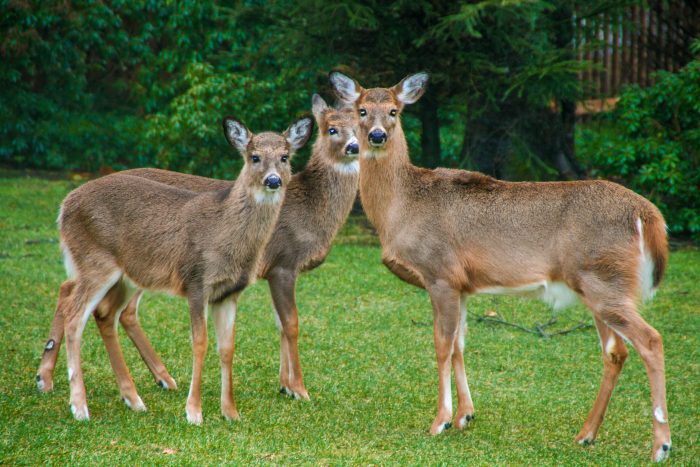With deer rutting season upon us, it’s crucial to remember that while these creatures nibbling on our properties or suddenly running in front of our vehicles can be irritating, they were here first.
Tens of thousands of deer call our Island home. This delicate ecosystem relies on their presence — perhaps not an overabundance, but a presence nonetheless. They influence the types of trees and vegetation that grow here by selectively browsing certain plants, meaning they eat some species more than others. They also contribute to overall biodiversity.
If we’re concerned about our gardens, we can try fencing, netting or chicken wire around problematic areas. If a deer runs toward our car at night, we should stay calm and do our best to drive straight, brake firmly and blow the horn, protecting both the vehicle’s passengers and the deer. Above all, we must not feed them. Not only is it dangerous to the deer’s health, but it also increases elopement rates and puts us in harm’s way. Deer may be gentle but can become aggressive when approached. If they learn that food is available in a specific area, they’ll return with friends, perpetuating a cycle of overpopulation in densely populated areas.
While the Island’s abundance of deer can be a nuisance, rutting — or mating season — is a natural part of this species’ biological function. They have added beauty and importance to our region since the days of our Setalcott predecessors.
They aren’t trying to hurt us or harm our land; they are simply following their instincts.
So let’s remain calm this rutting season. There are only two months of this hyperactivity among our deer, after which everything will return to business as usual.







